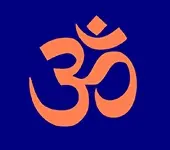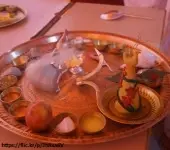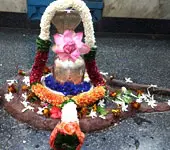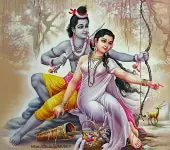Dasharatha's Ashwamedha Yaga Begins
?
What is the meaning of Ashwamedha Yaga?
Ashwamedha Yaga (or Ashwamedha sacrifice) is a Vedic ritual performed by ancient Indian kings to demonstrate their power and authority over neighboring kingdoms. The word 'Ashwamedha' is derived from two Sanskrit words - 'ashwa' meaning horse and 'medha' meaning sacrifice. In this ritual, a specially chosen horse is released to wander freely through neighboring kingdoms, accompanied by a large army. If the horse is captured by another kingdom, it is seen as a challenge to the king's power, and the capturing king must either submit to the king who initiated the Ashwamedha Yaga or face war. If the horse returns safely after a year of wandering, the king who initiated the ritual is declared victorious and is believed to have gained control over all the kingdoms through which the horse passed.
Who all performed Ashwamedha Yagna?
In ancient India, several kings are said to have performed the Ashwamedha Yagna to demonstrate their power and authority over neighboring kingdoms. Some of the most famous kings who performed the Ashwamedha Yagna are: 1. King Dasharatha: King Dasharatha is a legendary king from the Hindu epic Ramayana. He performed the Ashwamedha Yagna to have a child and was blessed with four sons, including Lord Rama. 2. King Yudhishthira: King Yudhishthira is a legendary king from the Hindu epic Mahabharata. He performed the Ashwamedha Yagna after the great war of Kurukshetra to establish his authority over the defeated kingdoms. 3. King Janaka: King Janaka was a king from the ancient kingdom of Mithila. He performed the Ashwamedha Yagna to demonstrate his power and authority as a king. 4. King Harsha: King Harsha was a 7th-century king who ruled over northern India. He performed the Ashwamedha Yagna to demonstrate his power and to gain the support of his subjects. 5. King Samudragupta: King Samudragupta was a 4th-century king who ruled over a large part of ancient India. He performed the Ashwamedha Yagna to establish his authority over the kingdoms that he had conquered. These are just a few examples of the many kings who performed the Ashwamedha Yagna in ancient India. The ritual was considered to be a symbol of the king's power and authority over his subjects and neighboring kingdoms.
Quiz
Ashwamedhika Parva is part of which book?Transcript
(Click here to read more)
Ahwamdedha yaga which king Dasharatha is going to perform to beget children is a year long yaga. It starts from chitra purnima and goes on for one year. The horse is released at the beginning, it roams around for one year and when it comes back, yaga is performed. संवत्सरान्ते वसन्ते प्राप्ते दीक्षा प्रवृत्तिरुपदिश्यते Rishyasringa , Dasharatha's son- in- law who is going to officiate the yaga is already there in Ayodhya. Some time went by. And when ch....
Transcript
(Click here)
Ahwamdedha yaga which king Dasharatha is going to perform to beget children is a year long yaga.
It starts from chitra purnima and goes on for one year.
The horse is released at the beginning, it roams around for one year and when it comes back, yaga is performed.
संवत्सरान्ते वसन्ते प्राप्ते दीक्षा प्रवृत्तिरुपदिश्यते
Rishyasringa , Dasharatha's son- in- law who is going to officiate the yaga is already there in Ayodhya.
Some time went by.
And when chitra purnima came the preparations started.
The Ashwamedha starts with a small ishti or yaga called Sangrahani.
If someone wants to be a ruler of a village, he needs to perform only Saangrahani.
This is done on Chaitra Purnima and marks the beginning of the Ashwamedha.
In yagas, precision is very very important.
Even all measurements are customized based on the yajamana.
The rope which is used as the rein for the horse should measure 12 aratnees.
An aratnee is 24 angulis.
One anguli is the breadth of a finger.
If you hold your four fingers stretched and together, the width is four angulis.
Like that 24 angulis is one aratnee.
The rope's length should be 12 aratnees.
And based on the breadth of the finger of the yajamana.
Aratnee is also called hasta.
Anguli is used for smaller measurements and aratnee or hasta is used for bigger measurements.
You can say aratnee is roughly about 18 inches.
It is the length from the elbow to the tip of the fingers.
Like that, 12 aratnees should be the length of the rope.
Roughly about 18 feet.
It should be made of Munja grass.
Munja is a grass eaten by cows.
It provides energy.
Munja grass stands for energy.
12 aratness because there are 12 months in a year.
12 aratnee long Munja grass made rope means a whole year filled with energy which is what the horse needs.
If you make an error here.
Suppose the rope is only 11 aratnees long, then the yaga will get interrupted after 11 months.
Or if it is made of grass not eaten by cows, then there will be no energy.
Chaitra purnima falls on Chitra Nakshatra.
This Nakshatra is chosen because Chitra means diversified, of different types.
Ashwamedha yaga has different sub yagas of diverse nature.
There are three types of Shrauta yagas mainly.
Ishti is yaga in which animal sacrifice is not there.
In Pashu yaga, animal sacrifice is there.
The third is Soma yaga, in which soma juice is used.
Ashwamedha has all three types of these sub yagas, diverse.
Hence Chitra Nakshatra is chosen to mark its beginning.
पुण्य नाम देवयजनम्ध्यवस्यति - the venue itself should sound holy and pleasing.
That's why the north bank of Sarayu was chosen, of course Ayodhya itself is holy.
When Vasanta ritu came, Dasharatha did the varanam of Rishyashringa.
Ritwikvaranam, it is called.
Telling the purohitas formally that I am soliciting you to conduct the yaga on my behalf. I am requesting you.
This is varanam.
Mainly there are four Ritwiks in any yajna.
Brahma, Adhwaryu, Hota, and Udgata.
They are called Mahartwiks, the main Ritwiks.
Yajurvedi purohita is responsible for all the physical acts such as preparation of the vedi, preparation of dravyas.
Agneehdra assists him in this.
Rigvedi Ritwik is Hota.
He chants the mantras.
Samavedi Ritwik is Udgata, he sings Sama Veda during the yajna.
Brahma is the supervisor, he should be thorough in all the procedures.
Brahma is the seniormost.
His varana is done first.
Here, Rishyasringa was requested to perform the role of Brahma.
The rule is that every Ritwik should be brought from where he is staying either on top of an elephant or a horse.
The king's senior staff should go and do this.
The rule from the veda says this - अपदातीनृत्विजः समावहन्त्या सुब्रह्मण्यायाः In addition to Brahma, Adhwaryu and Aagneedhra
For performing Pashu yaga on Vaishakha purnima.
Maitravaruna who assists hota is to be requested and brought, also प्रतिप्रस्थाता who would assist Adhwaryu.
On the amavasya of vaishakha masa, Brahmoudanam is to be done.
For this, all the four Mhattwiks are required.
Out of them. except the Udgata, all three have already been solicited.
Only the Samavedi Ritwik Udgata needs to be solicited.
For Deekshaneeyeshti, another Ritwik called प्रस्तोता is to be solicited.
He would sing Sama.
Eight more Ritwiks are needed.
ब्राह्मणाच्छंसिन् ( he assists Brahma), अच्छावाक, नेष्टा, प्रतिहर्ता, ग्रावस्तुत्, पोता, उन्नेता, सुब्रह्मण्य - they are all requested and brought to the yagavedi mounted on elephants or horses.
Ashwamedha is very elaborate.
Recommended for you
Wrong pronunciation may be the reason mantras are not working for you
 Click here to know more..
Click here to know more..
Secrets of Adishesha's Greatness

Discover the amazing story of Adishesha the thousand-headed serpent God who supports the earth. Learn about his birth and who are his avataras. ....
Click here to know more..Atmeshwara Pancharatna Stotram

shad'aadhaarordhvasannisht'ham' shad'utkarshasthaleshvaram . shat'sabhaaramanam' vande shad'adhvaaraadhanakshamam ......
Click here to know more..
English Topics
Ramayana
Click on any topic to open
- 50 Janaka's Spiritual Evolution - From Jnana to Bhakti
- 49 Dasharatha's Grief Decoded
- 48 Shiva burned Kamadeva at Chhapra, Bihar
- 47 Motherhood brilliance - Kausalya Supraja Rama
- 46 Bala and Atibala Mantras - Sriram Ji will unfold their superpower
- 45 Dasharatha Pleads With Vishwamtra Not To Take Away Young Sriram Ji
- 44 Abandoning Of Sita Devi - Is It Justifiable?
- 43 Vishwamitra Wants To Take Young Sriram Ji With Him
- 42 Position Of Sages In Ancient Bharata
- 41 Horoscope of Sriram Ji
Please wait while the audio list loads..
30
Ganapathy
Shiva
Hanuman
Devi
Vishnu Sahasranama
Mahabharatam
Practical Wisdom
Yoga Vasishta
Vedas
Rituals
Rare Topics
Devi Mahatmyam
Glory of Venkatesha
Shani Mahatmya
Story of Sri Yantra
Rudram Explained
Atharva Sheersha
Sri Suktam
Kathopanishad
Ramayana
Mystique
Mantra Shastra
Bharat Matha
Bhagavatam
Astrology
Temples
Spiritual books
Purana Stories
Festivals
Sages and Saints
